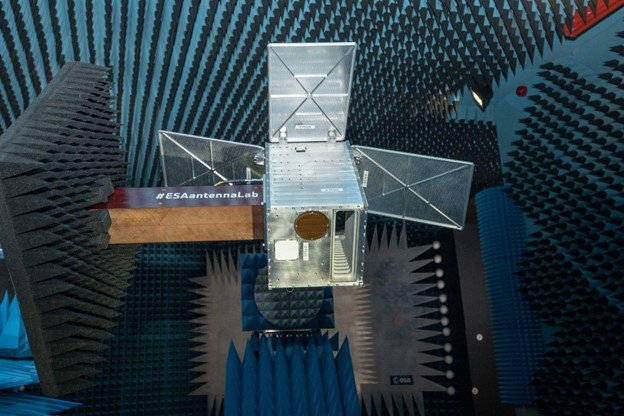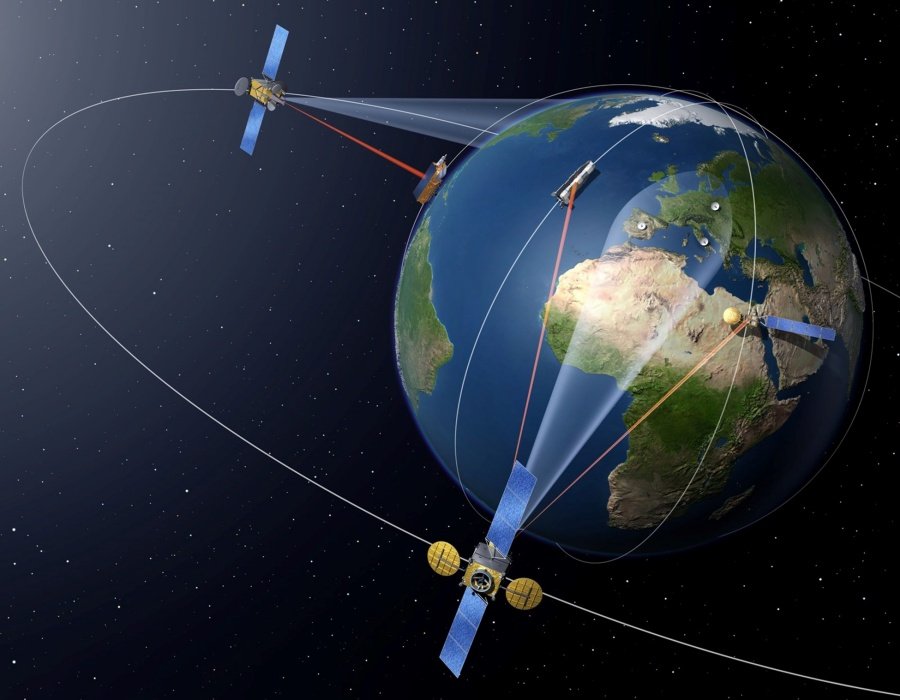A satellite system is a complex mechanism that, depending on the spacecraft’s purpose, may include multiple components. All of the equipment, from onboard electronics to scientific tools and payload, are hosted on satellite buses, which have gone through impressive advancements lately. But how does a satellite transmit data back to Earth, what frequencies does it use, and why does it need a bus in the first place? Read on to find out.
How Satellites Work & Why to Use Satellite Buses?
A satellite is a two-way communications system that can receive signals from Earth and retransmit data back to the ground segment with the help of radio signals. The chief components of any spacecraft include communications systems with antennas and radars, the power system with solar panels and batteries, as well as propulsion systems with thrusters and engines for orbital maneuvers. A satellite bus is an equally important component that may include all of the above-mentioned components. The actual satellite bus details will depend on spacecraft type and purpose, but generally, buses include trusses, electronic systems, power supplies, and any over equipment a satellite may need to carry out its mission.
The ground segment is an equally important part of a satellite system because ground computers can send signals to spacecraft in orbit, making it adjust its position, control temperature, propulsion, etc. In other words, the ground segment is the command center for a satellite, relying on a tracking telemetry and control (TT&C) system for communicating its commands.

The frequency range of satellite communication will differ depending on the spacecraft type and its position in orbit. Most Earth-observing satellites today are located in Low Earth Orbit (LEO), which is the closest to our planet and has the lowest signal propagation loss. It also means that signals are transferred quickly, with minimum latency. Satellite bus communication frequency may range anywhere between 1–50 gigahertz; the frequency bands are identified by letters: L-, S-, C-, X-, Ku-, Ka-, and V-bands. L-, S-, and C-bands are low-frequency bands that require large antennae to receive the signal. (X-, Ku-, Ka-, and V-bands have higher frequencies and can work with smaller antennae, such as standard satellite dishes. Today, Ku-band and Ka-bands are mostly used for TV broadcasting and mobile connectivity. However, space technology, including satellite buses and communication systems, are not standing still so lately, ultra-wideband frequencies have proven more effective for certain spacecraft types.
Ultra-wideband antennas and propagation in satellite buses
Ultra-wideband (UWB) is a type of radio frequency that uses a low energy range for high-bandwidth communication and is already used in the latest high-end smartphone models. Still, its original goal was to ensure quick, energy-efficient radar communication in LEO imagers, used primarily for Earth observation and monitoring. Ultra-wideband antennas and propagation for communications radar and imaging have several advantages compared to other frequencies, especially considering that these wireless systems do not rely on cable connectivity. This simplifies bus construction, as a result, decreasing manufacturing costs and reducing bus size.
In the long run, wider adoption of wireless communication in spacecraft buses should also make space component parts more reliable and flexible when it comes to spacecraft purposes. So far, dependence on cables and fiber optics has been one of the primary factors leading to communication latency, but until recently, wireless systems could not ensure the same quality coverage.
Now, with the advance in wireless connectivity and spacecraft bus designs, cableless systems seem to offer a better, more independent, and cost-effective solution. Modern UWBs operate within 3-9 GHz and occupy significantly less space on a bus compared to higher-end transmitters. At the same time, spacecraft buses using UWBs have proven to show no dead spots, which is often the issue with traditional optical fiber connectivity. Most importantly, UWBs show no dependence on throughput, delay spread, and propagation gain, which means that there should be no signal latency even with larger buses. This, in turn, implies that UWBs can potentially be used on larger spacecraft, not just small EO satellites.
Today’s space tech industry is pacing forward quicker than ever before. Space imagers and satellite bus systems are growing ever more advanced while also becoming more compact and lightweight. So, even though space remains a relatively untapped source for us, advances in satellite technology have already helped us gain a better understanding of our home planet. And, as spacecraft buses and imagery become more sophisticated, this knowledge will keep increasing.

